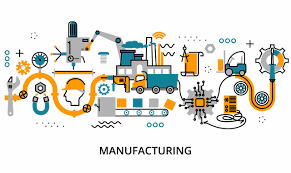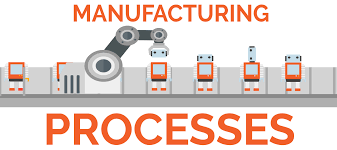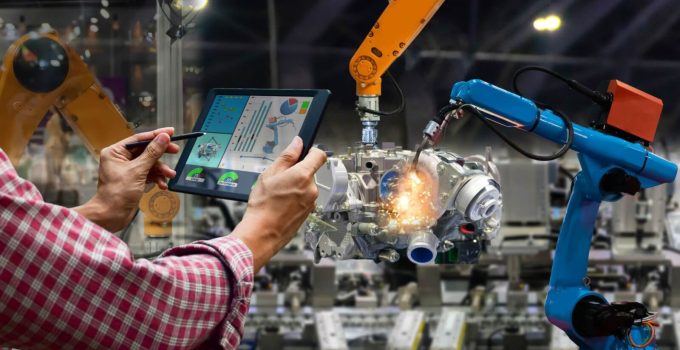Page Contents
ToggleThe manufacturing process is a fundamental aspect of industrial production that converts raw materials into finished goods through a series of systematic steps. This process involves a combination of machinery, labor, and technology to meet consumer demands efficiently. It plays a vital role in various industries, from automotive to food production, shaping the backbone of modern economies.
Overview of Manufacturing Process

Manufacturing can be defined as the process of transforming raw materials or components into finished products that meet specific requirements. It encompasses a broad spectrum of operations, including material selection, design, production, quality assurance, and packaging. Manufacturing processes vary widely depending on the type of product and industry, but the underlying principles remain consistent.
Types of Manufacturing Processes
Understanding the different types of manufacturing processes is crucial to optimizing production efficiency. Each type serves specific needs and is suited for particular materials and products.
Casting and Molding
Casting and molding involve shaping materials, often metals or plastics, into desired forms by using molds. Casting is commonly used in metal industries, where molten metal is poured into a mold and cooled to solidify. Molding, on the other hand, is frequently used in plastic manufacturing, with injection molding being one of the most popular methods.
Forming Processes
Forming processes reshape materials without adding or removing material. Examples include forging, rolling, extrusion, and stamping. These techniques are ideal for producing components like metal sheets, wires, or pipes with precise dimensions and durability.
Machining Processes
Machining involves the removal of material to achieve the desired shape and size. Processes such as drilling, milling, turning, and grinding fall under this category. Machining is particularly effective for creating intricate components with tight tolerances.
Joining Processes
Joining processes involve combining two or more parts to create a finished product. Techniques like welding, soldering, brazing, and adhesive bonding are common. These processes are essential for assembling complex machinery or structures.
Additive Manufacturing
Additive manufacturing, commonly known as 3D printing, is a revolutionary process that builds objects layer by layer from digital designs. This method is gaining popularity for its ability to produce highly customized products with minimal waste.
Key Stages in the Manufacturing Process
The manufacturing process typically follows a series of stages, each designed to ensure efficiency and quality.
Material Selection
Choosing the right materials is the first and most critical step. Factors such as strength, durability, cost, and environmental impact influence the selection process. Proper material choice sets the foundation for a successful manufacturing process.
Product Design
The design stage involves creating detailed specifications and prototypes of the product. This step ensures that the final product meets functional and aesthetic requirements. Advanced computer-aided design (CAD) software is often used to streamline this stage.
Production Planning
Production planning focuses on organizing resources, scheduling operations, and determining the most efficient workflow. This step minimizes downtime and optimizes resource allocation, ensuring smooth manufacturing operations.
Processing and Assembly
The actual manufacturing takes place in this stage, where raw materials are processed, components are assembled, and the product takes its final form. This stage heavily relies on precision and consistency to maintain quality.
Quality Control

Quality control ensures that the finished product meets industry standards and customer expectations. This involves inspecting materials, monitoring production processes, and testing the final product for defects or irregularities.
Packaging and Distribution
The final stage involves packaging the product for transportation and delivery to consumers. Proper packaging protects the product from damage and enhances its appeal, ensuring customer satisfaction.
Technological Advancements in Manufacturing
The manufacturing industry has undergone significant transformations due to technological advancements. These innovations have enhanced efficiency, reduced costs, and opened up new possibilities.
Automation and Robotics
Automation has revolutionized manufacturing by reducing human intervention in repetitive tasks. Robots and automated systems improve precision, speed, and consistency, making processes more efficient and cost-effective.
Artificial Intelligence and Machine Learning
AI and machine learning are enabling predictive maintenance, real-time monitoring, and process optimization. These technologies enhance decision-making and improve production outcomes.
Internet of Things (IoT)
IoT devices connect machinery and systems, allowing seamless data exchange. This connectivity enables manufacturers to monitor operations remotely, identify inefficiencies, and implement timely improvements.
Sustainable Practices in Manufacturing
Sustainability has become a focal point in the manufacturing industry. Companies are adopting eco-friendly practices to minimize their environmental impact while maintaining profitability.
Energy Efficiency
Energy-efficient machinery and renewable energy sources are helping reduce the carbon footprint of manufacturing processes. This shift not only benefits the environment but also lowers operational costs.
Waste Reduction
Efforts to reduce waste involve recycling materials, optimizing production processes, and adopting circular economy principles. These practices contribute to sustainable growth and resource conservation.
Eco-Friendly Materials
Using biodegradable or recyclable materials is gaining traction in manufacturing. This approach aligns with consumer preferences for environmentally conscious products.
Challenges in Manufacturing

Despite technological and sustainable advancements, the manufacturing industry faces several challenges that demand strategic solutions.
Supply Chain Disruptions
Global supply chains are vulnerable to disruptions caused by geopolitical tensions, natural disasters, or pandemics. Manufacturers must develop resilient supply chain strategies to mitigate risks.
Labor Shortages
Skilled labor shortages pose a significant challenge, especially in industries requiring specialized expertise. Investments in workforce training and education are essential to address this issue.
Technological Integration
Implementing new technologies can be costly and complex. Manufacturers must pg slot ensure proper training and infrastructure to maximize the benefits of technological advancements.
Future Trends in Manufacturing
The future of manufacturing is shaped by emerging trends and innovations that promise to redefine the industry.
Smart Factories
Smart factories leverage advanced technologies like IoT, AI, and robotics to create interconnected and highly efficient production environments. These factories optimize processes and reduce downtime significantly.
Mass Customization
Consumers increasingly demand personalized products. Manufacturing processes are evolving to accommodate mass customization, offering tailored solutions without compromising efficiency.
Sustainable Innovations
Sustainability will continue to drive innovation in manufacturing. New materials, energy sources, and waste management techniques will play a crucial role in shaping the industry’s future.
Conclusion
The manufacturing process is a dynamic and essential aspect of modern industry, continuously evolving to meet changing demands and challenges. With technological advancements and a focus on sustainability, manufacturers are poised to achieve greater efficiency, quality, and environmental responsibility. By understanding the intricacies of this process, businesses can adapt to emerging trends and thrive in an ever-competitive global market.

